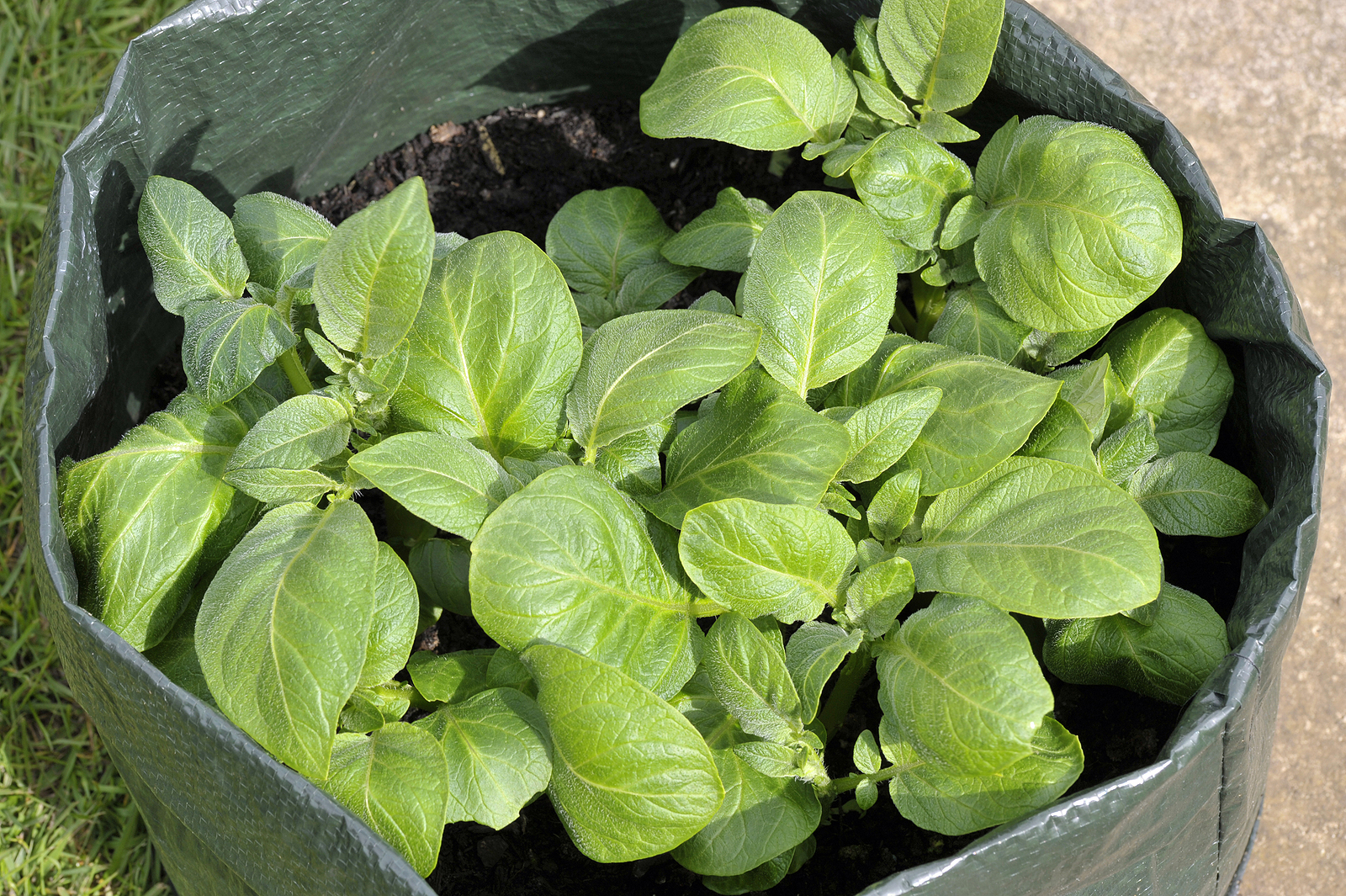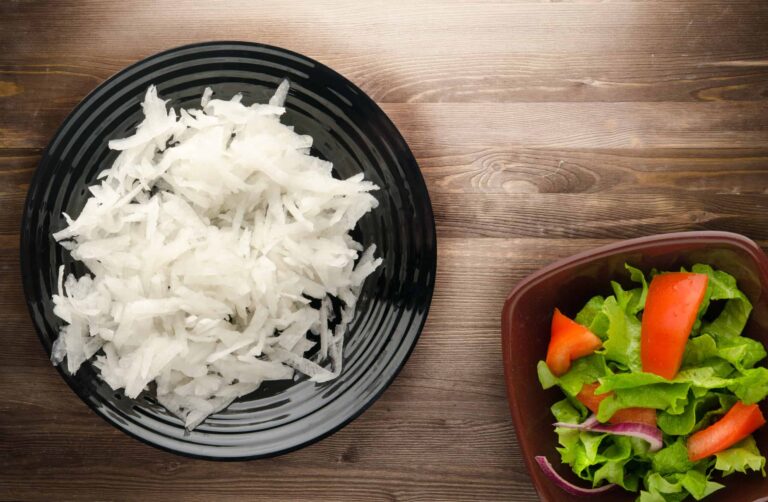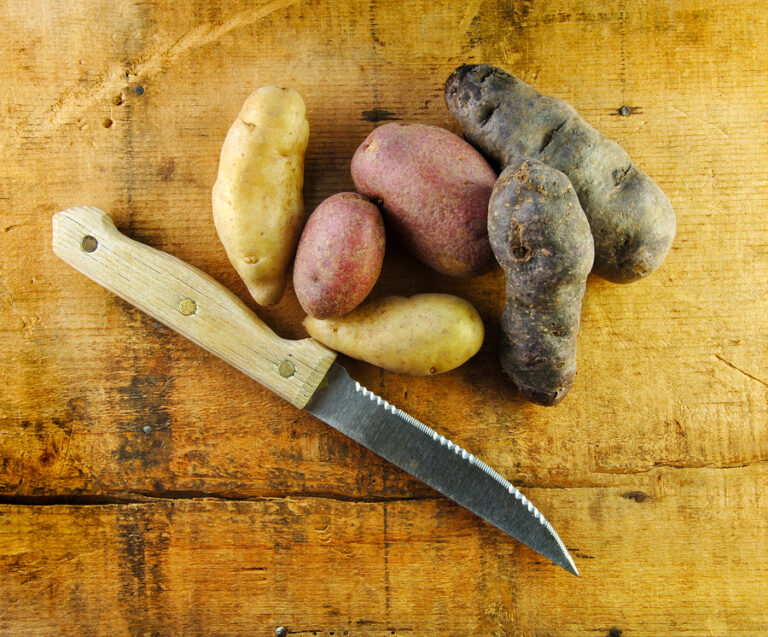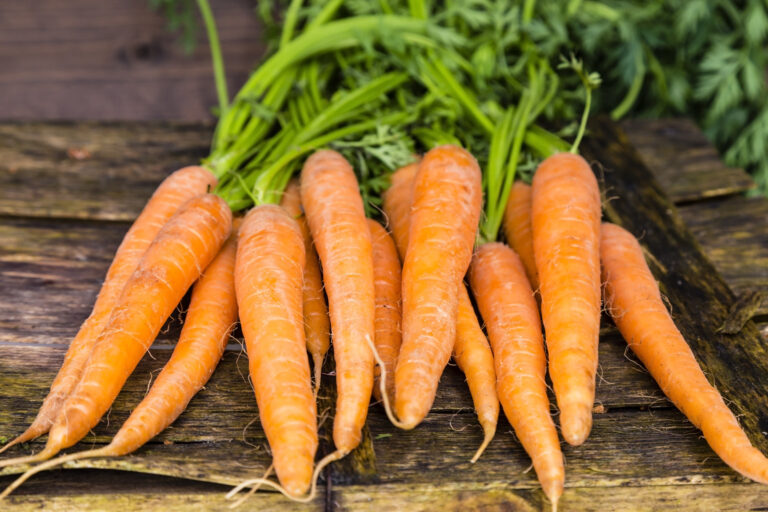How to Grow Potatoes in Containers: A Complete Guide
Growing potatoes in containers is one of my favorite ways to produce fresh, homegrown spuds—especially in small spaces or when soil quality is poor. After more than 30 years of experimenting in raised beds, mounded rows, and containers, I’ve found that potatoes thrive in pots when given the right conditions. This guide covers everything from choosing the best varieties to harvesting a full bucket of tubers.
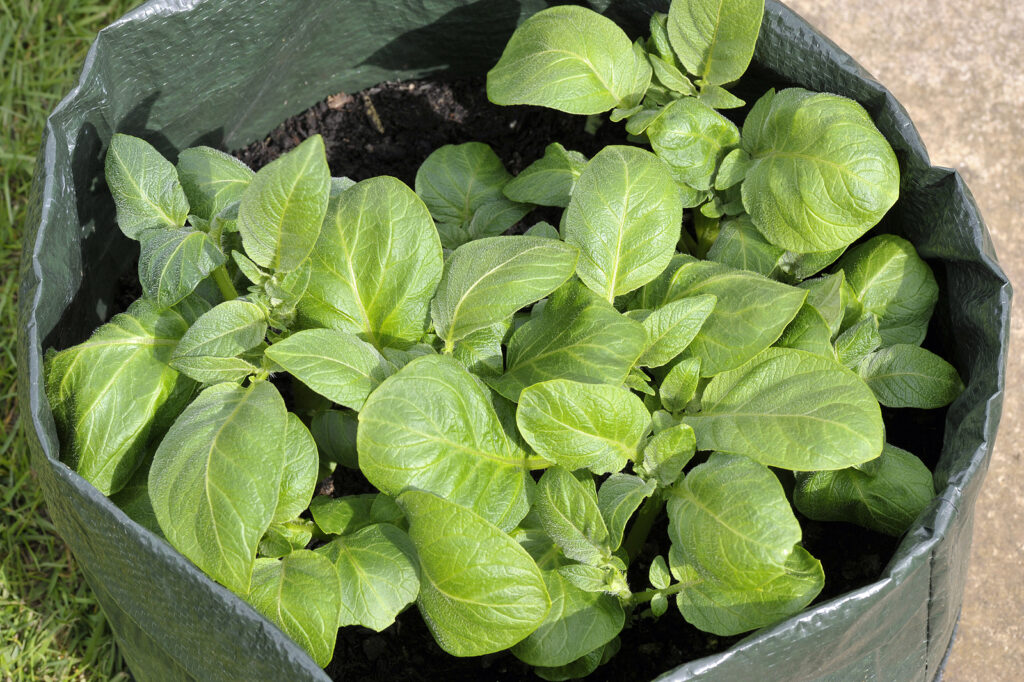
Why Grow Potatoes in Containers?
- Space-saving: Ideal for patios, balconies, or small gardens.
- Soil control: You can choose the perfect soil mix for healthy tubers.
- Pest reduction: Containers make it easier to avoid soil-borne diseases and pests like wireworms or scab.
- Easier harvesting: Simply tip the container and collect your potatoes—no digging required.
1. Choose the Right Container
Potatoes need depth for tuber development. I’ve had great results with:
- 10–15 gallon fabric grow bags – allow for excellent drainage and root aeration.
- Tall plastic or wooden tubs – retain moisture well but must have drainage holes.
Aim for at least 16 inches in depth and 14 inches in diameter per plant.
2. Select the Best Varieties for Containers
Through trial and error, I’ve found that early and mid-season varieties do best in pots. My favorites:
- Yukon Gold – reliable yield and creamy flavor.
- Red Norland – perfect for early “new potatoes.”
- On Deck – a dwarf sweet corn variety? No—this is also a potato-friendly space term, but in potatoes, choose compact growth habits.
Tip: Avoid very late-season varieties—they need more root space than most containers provide.
3. Use a Loose, Fertile Growing Mix
Potatoes dislike heavy, compacted soil. I recommend:
- 2 parts high-quality potting mix
- 1 part compost or well-rotted manure
- A handful of balanced organic fertilizer (5-5-5)
This mix drains well while holding enough moisture for steady growth.
4. Prepare and Plant Seed Potatoes
- Cut large seed potatoes into 1.5–2 oz pieces with at least 1–2 eyes each.
- Cure for 1–3 days in a warm, dry place to prevent rot.
- Fill the container with 4–6 inches of soil, place the seed pieces eye-up, and cover with 3 inches of mix.
5. Hill as the Plants Grow
When plants reach 6–8 inches tall, add more soil mix around the stems, leaving the top leaves exposed. Repeat until the container is nearly full. This encourages more tuber formation up the stem.
6. Water Consistently
Container potatoes dry out faster than those in the ground. Keep the soil evenly moist but not waterlogged. I water deeply 2–3 times per week in warm weather.
7. Feed for Strong Growth
At planting, mix in an organic granular fertilizer. Once plants start flowering, feed every two weeks with a diluted liquid fertilizer high in potassium for better tuber development.
8. Harvesting Potatoes in Containers
- New potatoes: Harvest when plants flower by gently reaching into the soil.
- Mature potatoes: Wait until foliage turns yellow and dies back. Dump the container and collect your harvest.
My Gardener’s Tip: In hot climates like my summer garden in Sonoma Valley, I keep containers in partial shade during the hottest afternoons to prevent heat stress and premature dieback.
Potato Container-Growing Schedule
| Growth Stage | Time After Planting | What to Do | My Experience Tip |
|---|---|---|---|
| Planting | Day 0 | Fill container with 4–6 inches of soil, plant seed potatoes eye-up, cover with 3 inches of mix | Start with moist—not soggy—soil for quick sprouting |
| First Growth | 2–3 weeks | Shoots emerge | Keep soil evenly moist; avoid overwatering seedlings |
| First Hilling | 3–4 weeks | Plants 6–8 inches tall | Add 3–4 inches of soil mix, covering lower leaves |
| Second Hilling | 5–6 weeks | Plants 10–12 inches tall | Add soil until container is nearly full |
| Flowering | 8–10 weeks | First blooms appear | Feed every 2 weeks with liquid fertilizer high in potassium |
| New Potato Harvest | 10–12 weeks | Plants flowering | Gently dig or reach in to harvest small tubers |
| Full Maturity | 14–16 weeks | Foliage yellow and dying back | Stop watering, let tubers cure in soil for 5–7 days, then empty container |
Potato Growing Hub
Start here: The Ultimate Potato Growing Guide: From Seed to Harvest
🥔 Varieties & Planting Prep
- Best Potato Varieties for Different Cooking Uses – Detailed profiles on varieties for boiling, baking, mashing, and roasting.
- Guide to Fingerling Potatoes: Growing, Cooking, and Varieties – Spotlight on fingerlings with care tips and culinary uses.
- How to Prepare and Cut Seed Potatoes for Planting – Step-by-step guide to maximize yield and reduce disease risk.
- Seed Potato Starting Tips – Ready your seed potatoes and plant
🌱 Planting & Early Growth
- How to Grow Potatoes in Containers: A Complete Guide – Soil, container size, watering, and harvesting tips for small-space growers.
- Grow Potatoes in Pots and Grow Bags: Seven Easy Steps
- 6 Easy Steps to Grow Organic Potatoes
- Companion Planting with Potatoes: What to Grow Together and Avoid – Maximize garden health and productivity through smart companion planting.
- Growing Potatoes in Mild Winter and Tropical Climates – Specific tips for successful potato cultivation in warmer regions.
- How to Identify Potato Growth Stages and Troubleshoot Problems – Recognize each growth phase and manage issues at every stage.
🌿 Care & Maintenance
- How and When to Hill Potatoes for Bigger Yields – Detailed instructions and timing for hilling to support tuber development.
- Watering Potatoes: Best Practices for Healthy Growth – Provide consistent moisture without risking rot or stress.
- Common Potato Pests, Disease, and Problems: Organic Solutions – Identification and natural control strategies for common pests.
- Crop Rotation Strategies for Potatoes to Prevent Soil-Borne Diseases – Plan your garden for long-term soil health and disease prevention.
🧺 Harvest & Storage
- Harvesting Potatoes: Signs of Maturity and Techniques to Avoid Damage – Know when potatoes are ready and how to harvest carefully.
- How to Harvest and Stoe Potatoes – Ideal temperature, humidity, and storage environments to keep potatoes fresh.
🍽️ Cooking & Kitchen Insights
- Testing Potato Starch Levels: Why It Matters and How to Do It – Understand starch content to choose the right potato for each dish.
- Seven Ways to Cook and Serve Potatoes – Easy ways to serve your potato harvest.
- How to Cook New Potatoes with No Recipe – Here’s how to get those little spuds on the table fast.

